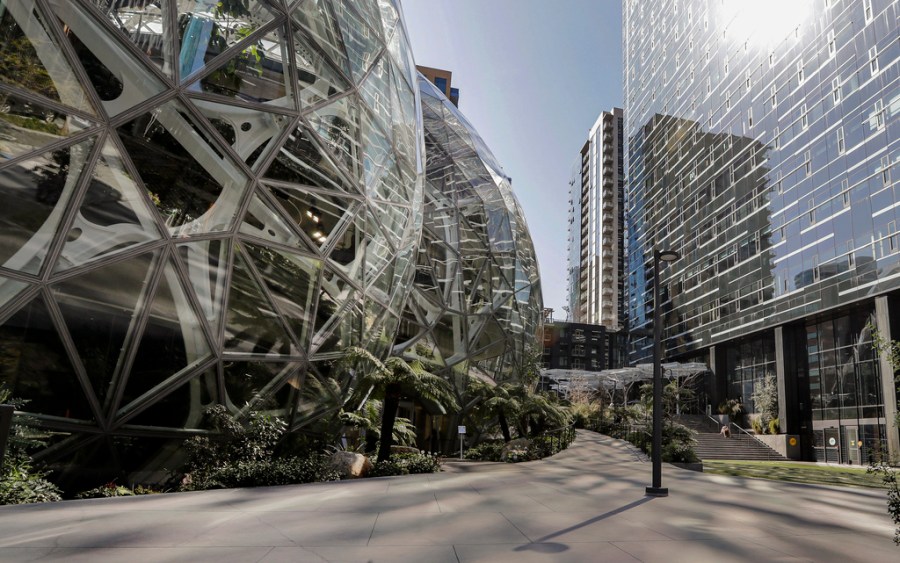
Amazon’s recent decision to require corporate employees to return to the office five days a week is generating significant controversy. In a memo to employees, CEO Andy Jassy emphasized the benefits of in-person work, such as increased collaboration, innovation and cultural connection.
This stance flies in the face of a growing body of research showing the advantages of hybrid work models — not full-time office work — for productivity, employee performance and retention. Moreover, many organizations have tired of fighting return-to-office battles and have moved on to more important priorities, allowing their employees more flexibility. Thus, Amazon’s top-down policy stands out as a regressive approach, likely to backfire.
Government data, the best kind of evidence available, suggests that the large majority of employers, unlike Amazon, are moving away from rigid in-office requirements and embracing flexibility. The Bureau of Labor Statistics reports a year-over-year increase in the number of employees working from home either some of the time or all the time, from 19.5 percent in August 2023 to 23 percent in August 2024. The share of hybrid workers — those who work remotely some of the time — climbed from 9 percent to 12 percent over the same period; those who worked remotely all the time inched upward from 10 percent to 11 percent.
Senior leaders across various industries have started to realize that the effort to monitor and enforce strict in-office attendance is often more trouble than it’s worth. Instead of fostering collaboration and creativity, these mandates frequently lead to resentment and disengagement, as the opposition to heavy-handed in-office mandates has not subsided, leading companies to move on to more important priorities. Some organizations are even experiencing a “hushed hybrid” trend, whereby managers quietly agree with their teams to reduce in-office days, acknowledging the impracticality and inefficiency of enforcing stringent rules.
Additionally, employees come to the office only for superficial compliance, to meet with a colleague and drink a cup of coffee, known as “coffee badging,” thus complying with the letter of the law while undermining its spirit. No wonder that the 2023 Global Traffic Scorecard by traffic analysis firm INRIX observed significant changes in commuting patterns, with a decrease in peak morning and evening traffic congestion and an increase around midday.
Amazon’s return-to-office mandate, as outlined by Jassy, is built on the premise that proximity fosters productivity. Jassy argues that being physically present in the office enhances collaboration, brainstorming and invention while reinforcing the company’s culture. This rationale is not unique; it echoes a broader, albeit increasingly outdated, belief among some executives that in-person work inherently drives better outcomes.
However, evidence suggests otherwise. Research increasingly points to hybrid work — not a full five-day office week — as the optimal balance for maximizing productivity and job satisfaction. A variety of studies bear this out, including one in Nature, one of the two most prominent scientific journals. Hybrid work models, which combine remote and in-office work, lead to higher levels of employee performance and engagement.
For instance, scholars find that employees working in a hybrid model often experience fewer distractions and take fewer sick days than their fully in-office counterparts, leading to higher productivity. This approach also offers flexibility that helps attract and retain top talent — a significant factor for tech companies such as Amazon. A forced five-day week in-office ignores these benefits, as well as the significant shift in employee expectations toward greater flexibility.
Amazon’s leadership may be hoping for bustling offices, filled with spontaneous brainstorming sessions and serendipitous encounters. But the reality of office-based work often looks quite different. Much of the work carried out by Amazon’s corporate employees — such as programming, research, data analysis, responding to emails and participating in videoconferences and phone calls — does not require in-person interaction. In fact, these tasks are often more effectively and efficiently performed in a remote setting, free from the distractions and time costs associated with commuting and navigating office politics.
The push for a full-time return to the office overlooks the fact that much of today’s knowledge work is independent rather than collaborative. Remote and hybrid models provide the quiet, uninterrupted environments necessary for deep, focused work.
For example, software developers often need extended periods of concentration that are far easier to achieve outside of a noisy, interruption-laden office environment. Similarly, roles that require heavy research, writing or data analysis benefit from the kind of deep focus that is more achievable in a controlled home-office setting. By forcing employees back into a one-size-fits-all in-office model, Amazon risks reducing overall productivity rather than enhancing it.
Amazon’s decision to enforce a five-day in-office policy comes just as many other companies are moving in the opposite direction, recognizing the importance of flexibility in today’s work environment. The company risks creating a significant disconnect between its leadership’s expectations and its employees’ preferences. This gap will lead to increased turnover, lower morale, and a potential loss of top talent who are drawn to more progressive companies that offer flexible work arrangements.
Gleb Tsipursky, Ph.D., serves as the CEO of the hybrid work consultancy Disaster Avoidance Experts and authored the best-seller “Returning to the Office and Leading Hybrid and Remote Teams.“

